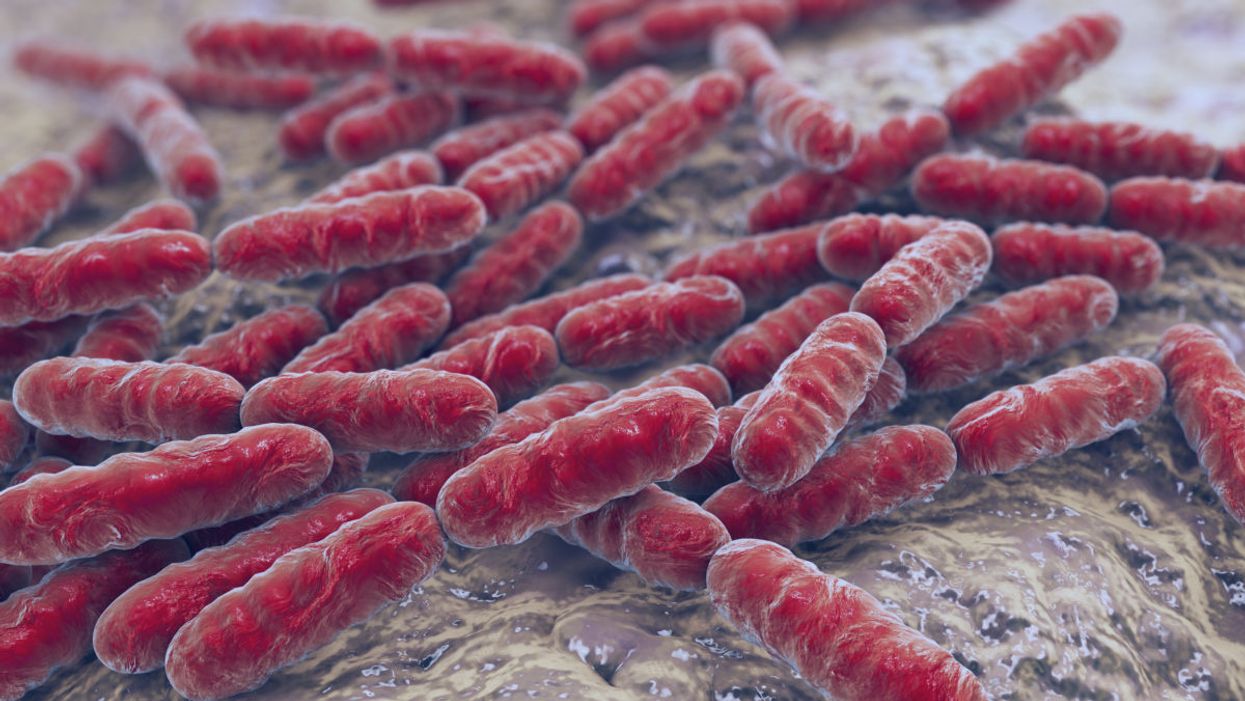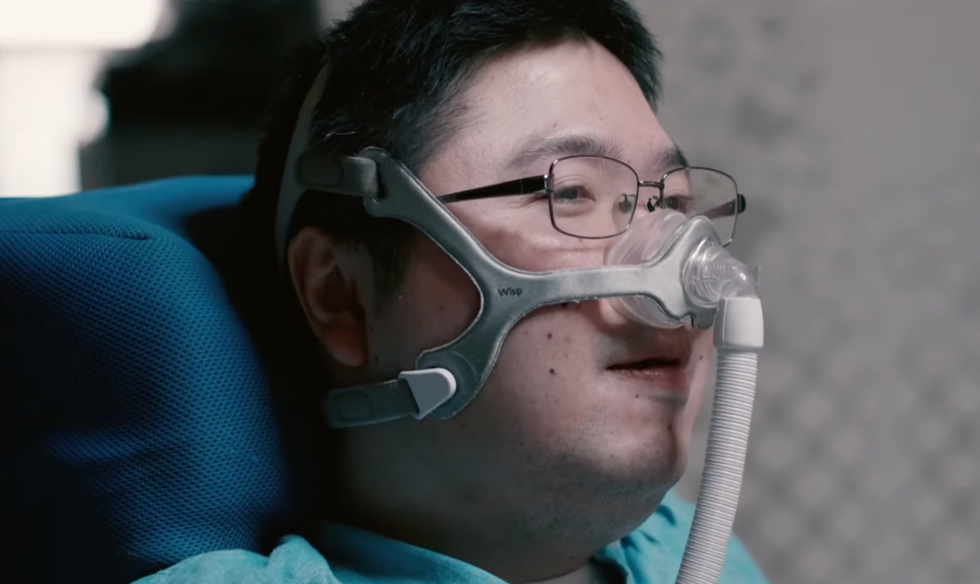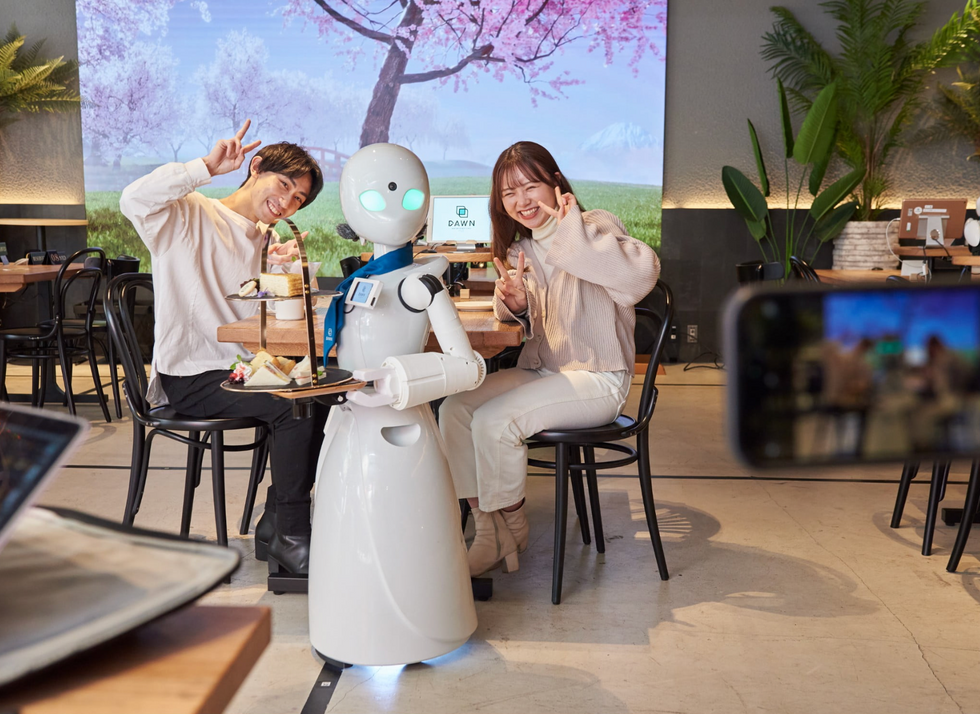"There's a Bacteria For That"
Kira Peikoff was the editor-in-chief of Leaps.org from 2017 to 2021. As a journalist, her work has appeared in The New York Times, Newsweek, Nautilus, Popular Mechanics, The New York Academy of Sciences, and other outlets. She is also the author of four suspense novels that explore controversial issues arising from scientific innovation: Living Proof, No Time to Die, Die Again Tomorrow, and Mother Knows Best. Peikoff holds a B.A. in Journalism from New York University and an M.S. in Bioethics from Columbia University. She lives in New Jersey with her husband and two young sons. Follow her on Twitter @KiraPeikoff.

Bacteria Lactobacillus, gram-positive rod-shaped lactic acid bacteria which are part of normal flora of human intestine are used as probiotics and in yogurt production, close-up view. (Image copyright: Fotolia)
"There's an app for that." Get ready for a cutting-edge twist on this common phrase. In the life sciences, researchers in the field of synthetic biology are engineering microbes to execute specific tasks, like diagnosing gut inflammation, purifying dirty water, and cleaning up oil spills. Here are five academic and commercial projects underway now that will make you want to add the term "designer bacteria" to your vocab.
1) Bacteria that can sense, diagnose and treat disorders of the gut.
Dr. Pamela Silver at Harvard Medical School has engineered non-pathenogenic strains of E. Coli bacteria, which she calls "living diagnostics and therapeutics," to accurately sense whether an animal has been exposed to antibiotics and whether inflammation is present in its intestines.
Imagine a "living FitBit" that could report on your gut health in real time.
So how does it work? "The bacteria have a genetic switch like a light switch," she explains, "and when they are exposed to an antibiotic or an inflammatory response, the light switch flips to on and the bacteria turn color." In a study that Silver and her colleagues published earlier this year, the bacteria in mouse guts turned blue when exposed to the chemical tetrathionate, which is produced during inflammation. Then, when the animal excreted waste, its feces were also blue. For safety reasons, the excreted bacteria can additionally be programmed to self-destruct so as not to contaminate the environment.
The implications for human health go way beyond a non-invasive alternative to colonoscopies. Imagine "a living FitBit," Silver says with a laugh – a probiotic your doctor could prescribe that could colonize your gut to report on your intestinal health and your diet—and even treat pathogens at the same time. Another potential application is to deploy this new tool in the skin as a living sensor. "Your skin has a defined population of bacteria and those could be engineered to sense a lot," she says, such as pathological changes and toxic environmental exposures.
But one big social question in this emerging research remains how open the public and regulators will be to genetically modified organisms as drugs. Silver says that acceptance will require "patient advocacy, education, and showing these actually work. We have shown in an animal that it can work. So far, in humans, it's unclear."
"Live biotherapeutic products" is a whole new category of drug.
2) Bacteria that can treat a rare metabolic disease.
The startup company Synlogic, based in Cambridge, Mass., has designed an experimental pill containing a strain of E. Coli bacteria that can soak up excess ammonia in a person's stomach, treating those who suffer from toxic elevated blood ammonia levels. This condition, called hyperammonemia, can occur in those with chronic liver disease or genetic urea cycle disorders. The pill is genetically engineered to convert ammonia into a beneficial amino acid instead.
Just a few weeks ago, the company announced positive data from its Phase 1 trial, in which the pill was tested on a group of 52 healthy volunteers for the first time. The study was randomized, double-blind and placebo-controlled, which means that neither the researchers nor the subjects knew who was getting the active pill vs. a sham one. This design is the gold standard in clinical research because it overcomes bias and produces objective results. So far, the pill appears to be safe and well-tolerated, and the company plans to continue the next phase of testing in 2018. Synlogic's treatment stands to be the first of this category of therapy—called "live biotherapeutic products"—that will be scrutinized by the FDA when the time comes for possible market approval.
3) Bacteria that can be sprayed on land to clean up an oil spill.
"This is science fiction, but it's become a lot less science fiction in the last couple of years," says Floyd E. Romesberg, a professor of chemistry whose lab at the Scripps Research Institute in California is on the forefront of synthetic biology.
"We have literally increased the biology that cells can write stories with."
His lab has added two new letters to the code of life. At the most fundamental level, all life on Earth, including human, animal, and bacteria, relies on the four "letters" or chemical building blocks of A, T, C, and G to store biological information inside a cell and then retrieve it in the form of proteins that perform essential tasks. For the first time in history, Romesberg and his team have now developed an unnatural base pair—an X and a Y—capable of storing increased information.
"We have literally increased the biology that cells can write stories with," he says. "With new letters, you can write new words, new sentences, and you can tell new stories, as opposed to taking the limited vocabulary you have and trying to rearrange it."
The implications of his research are immense; applications range from developing therapeutic proteins as drugs, to bestowing cells with new properties, such as oxidizing oil after a spill. He imagines a future scenario in which, for example, specially engineered bacteria are sprayed on a beach, eat the oil for three generations of their life—less than a day—and then die off, since they will be unable to replicate their own DNA. Afterwards, the beach is clean.
"What we are struggling with now is the first steps toward doing that – the cell relying on unnatural information to survive, rather than doing something new yet," he says, "but that's where we are headed."
4) Bacteria that can deliver cancer-killing drugs inside tumors.
Researcher Jeff Hasty at UCSD has engineered a strain of Salmonella bacteria to penetrate cancer tumors and deliver drugs that stop their growth. His approach is especially clever because it solves a major problem in cancer drug delivery: chemotherapy relies on blood vessels for transit, but blood vessels don't exist deep inside tumors. Using this fact to his advantage, Hasty and his team designed bacteria that can sneak drugs all the way into a tumor and then self-destruct, taking the tumor down in the process.
So far, the treatment in mice has been successful; their tumors stopped growing after they were given the bacteria, and along with the use of chemotherapy, their life expectancy increased by half.
Many questions remain in terms of applicability to tumors in human beings, but the notion of a bacterial therapy remains a promising clinical approach for treating cancer in the future.
Craft beer experts couldn't tell the difference between beer brewed with regular vs. recycled water.
5) Bacteria that can convert wastewater into drinkable water.
Boston-based company Cambrian Innovation has a patented product called the EcoVolt MINI that uses microbes to generate energy through contact with electrodes. The company has collaborated with breweries across the country, taking their waste water and converting it to clean water and clean energy. Through the company's bioelectrochemical system, microbes eat the contaminants in the wastewater, and as a byproduct they produce methane, which can be converted to heat and power; in some cases, the process generates enough energy to send some back to the brewery.
"The main goal of the system is to produce cleaner water; the energy is an added product," explains Claire Aviles, Cambrian's marketing and communications manager.
The wastewater treatment is so effective that the water can be made suitable for reuse. One brewery client, for example, recently experimented with using the recycled water to brew a beer at a festival in California. They used the same recipe for two beers—one with typical city water and one with recycled water from Cambrian's system—and offered a side-by-side taste test to consumers and craft beer experts alike.
"Most people couldn't tell which was which," Aviles says.
In fact, most of the tasters preferred the beer brewed with the recycled water.
Turns out bacteria aren't always dirty after all.
Kira Peikoff was the editor-in-chief of Leaps.org from 2017 to 2021. As a journalist, her work has appeared in The New York Times, Newsweek, Nautilus, Popular Mechanics, The New York Academy of Sciences, and other outlets. She is also the author of four suspense novels that explore controversial issues arising from scientific innovation: Living Proof, No Time to Die, Die Again Tomorrow, and Mother Knows Best. Peikoff holds a B.A. in Journalism from New York University and an M.S. in Bioethics from Columbia University. She lives in New Jersey with her husband and two young sons. Follow her on Twitter @KiraPeikoff.
A robot server, controlled remotely by a disabled worker, delivers drinks to patrons at the DAWN cafe in Tokyo.
A sleek, four-foot tall white robot glides across a cafe storefront in Tokyo’s Nihonbashi district, holding a two-tiered serving tray full of tea sandwiches and pastries. The cafe’s patrons smile and say thanks as they take the tray—but it’s not the robot they’re thanking. Instead, the patrons are talking to the person controlling the robot—a restaurant employee who operates the avatar from the comfort of their home.
It’s a typical scene at DAWN, short for Diverse Avatar Working Network—a cafe that launched in Tokyo six years ago as an experimental pop-up and quickly became an overnight success. Today, the cafe is a permanent fixture in Nihonbashi, staffing roughly 60 remote workers who control the robots remotely and communicate to customers via a built-in microphone.
More than just a creative idea, however, DAWN is being hailed as a life-changing opportunity. The workers who control the robots remotely (known as “pilots”) all have disabilities that limit their ability to move around freely and travel outside their homes. Worldwide, an estimated 16 percent of the global population lives with a significant disability—and according to the World Health Organization, these disabilities give rise to other problems, such as exclusion from education, unemployment, and poverty.
These are all problems that Kentaro Yoshifuji, founder and CEO of Ory Laboratory, which supplies the robot servers at DAWN, is looking to correct. Yoshifuji, who was bedridden for several years in high school due to an undisclosed health problem, launched the company to help enable people who are house-bound or bedridden to more fully participate in society, as well as end the loneliness, isolation, and feelings of worthlessness that can sometimes go hand-in-hand with being disabled.
“It’s heartbreaking to think that [people with disabilities] feel they are a burden to society, or that they fear their families suffer by caring for them,” said Yoshifuji in an interview in 2020. “We are dedicating ourselves to providing workable, technology-based solutions. That is our purpose.”

Shota, Kuwahara, a DAWN employee with muscular dystrophy, agrees. "There are many difficulties in my daily life, but I believe my life has a purpose and is not being wasted," he says. "Being useful, able to help other people, even feeling needed by others, is so motivational."
A woman receives a mammogram, which can detect the presence of tumors in a patient's breast.
When a patient is diagnosed with early-stage breast cancer, having surgery to remove the tumor is considered the standard of care. But what happens when a patient can’t have surgery?
Whether it’s due to high blood pressure, advanced age, heart issues, or other reasons, some breast cancer patients don’t qualify for a lumpectomy—one of the most common treatment options for early-stage breast cancer. A lumpectomy surgically removes the tumor while keeping the patient’s breast intact, while a mastectomy removes the entire breast and nearby lymph nodes.
Fortunately, a new technique called cryoablation is now available for breast cancer patients who either aren’t candidates for surgery or don’t feel comfortable undergoing a surgical procedure. With cryoablation, doctors use an ultrasound or CT scan to locate any tumors inside the patient’s breast. They then insert small, needle-like probes into the patient's breast which create an “ice ball” that surrounds the tumor and kills the cancer cells.
Cryoablation has been used for decades to treat cancers of the kidneys and liver—but only in the past few years have doctors been able to use the procedure to treat breast cancer patients. And while clinical trials have shown that cryoablation works for tumors smaller than 1.5 centimeters, a recent clinical trial at Memorial Sloan Kettering Cancer Center in New York has shown that it can work for larger tumors, too.
In this study, doctors performed cryoablation on patients whose tumors were, on average, 2.5 centimeters. The cryoablation procedure lasted for about 30 minutes, and patients were able to go home on the same day following treatment. Doctors then followed up with the patients after 16 months. In the follow-up, doctors found the recurrence rate for tumors after using cryoablation was only 10 percent.
For patients who don’t qualify for surgery, radiation and hormonal therapy is typically used to treat tumors. However, said Yolanda Brice, M.D., an interventional radiologist at Memorial Sloan Kettering Cancer Center, “when treated with only radiation and hormonal therapy, the tumors will eventually return.” Cryotherapy, Brice said, could be a more effective way to treat cancer for patients who can’t have surgery.
“The fact that we only saw a 10 percent recurrence rate in our study is incredibly promising,” she said.


